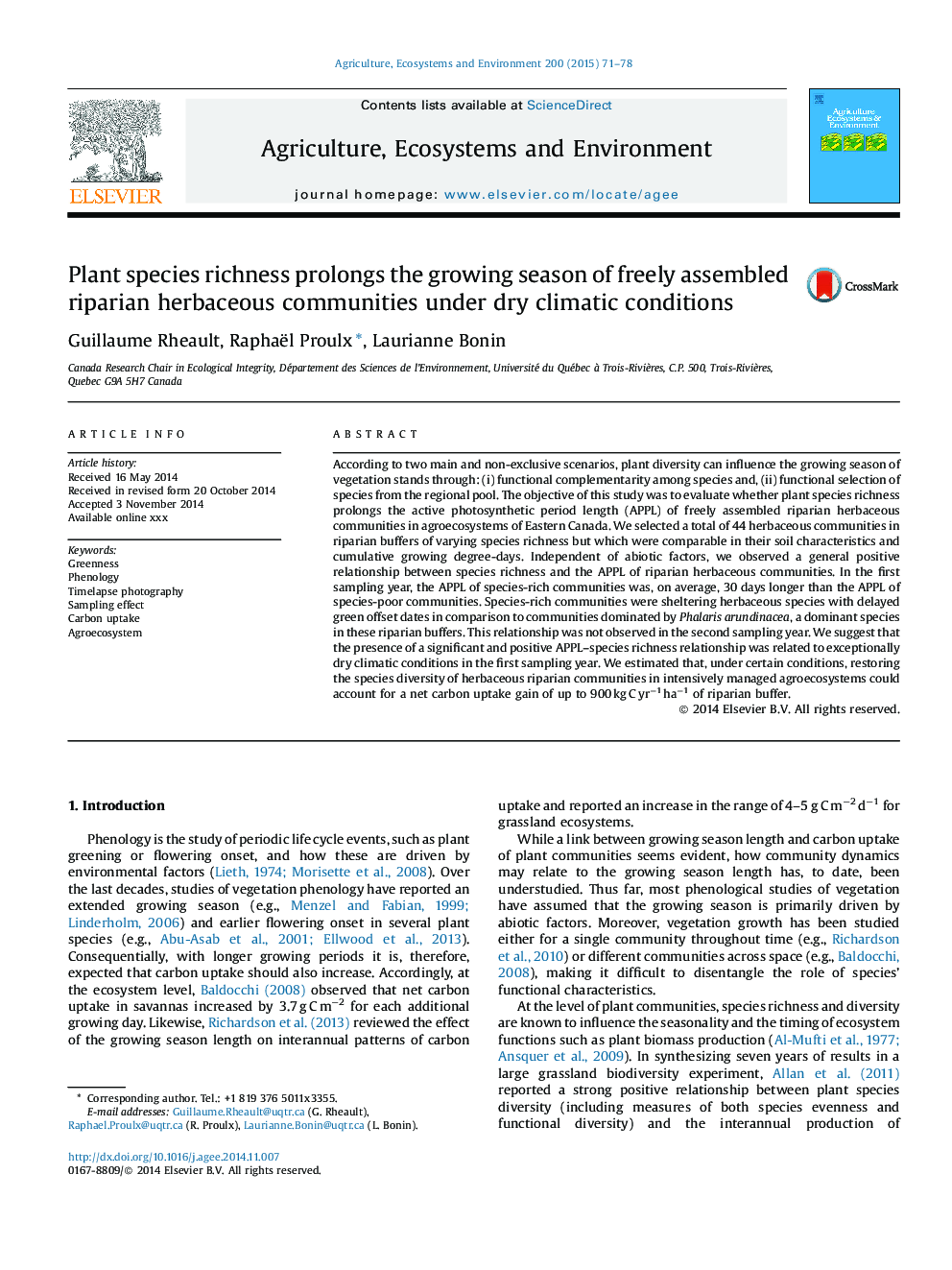| Article ID | Journal | Published Year | Pages | File Type |
|---|---|---|---|---|
| 8487790 | Agriculture, Ecosystems & Environment | 2015 | 8 Pages |
Abstract
According to two main and non-exclusive scenarios, plant diversity can influence the growing season of vegetation stands through: (i) functional complementarity among species and, (ii) functional selection of species from the regional pool. The objective of this study was to evaluate whether plant species richness prolongs the active photosynthetic period length (APPL) of freely assembled riparian herbaceous communities in agroecosystems of Eastern Canada. We selected a total of 44 herbaceous communities in riparian buffers of varying species richness but which were comparable in their soil characteristics and cumulative growing degree-days. Independent of abiotic factors, we observed a general positive relationship between species richness and the APPL of riparian herbaceous communities. In the first sampling year, the APPL of species-rich communities was, on average, 30 days longer than the APPL of species-poor communities. Species-rich communities were sheltering herbaceous species with delayed green offset dates in comparison to communities dominated by Phalaris arundinacea, a dominant species in these riparian buffers. This relationship was not observed in the second sampling year. We suggest that the presence of a significant and positive APPL-species richness relationship was related to exceptionally dry climatic conditions in the first sampling year. We estimated that, under certain conditions, restoring the species diversity of herbaceous riparian communities in intensively managed agroecosystems could account for a net carbon uptake gain of up to 900 kg C yrâ1 haâ1 of riparian buffer.
Related Topics
Life Sciences
Agricultural and Biological Sciences
Agronomy and Crop Science
Authors
Guillaume Rheault, Raphaël Proulx, Laurianne Bonin,
